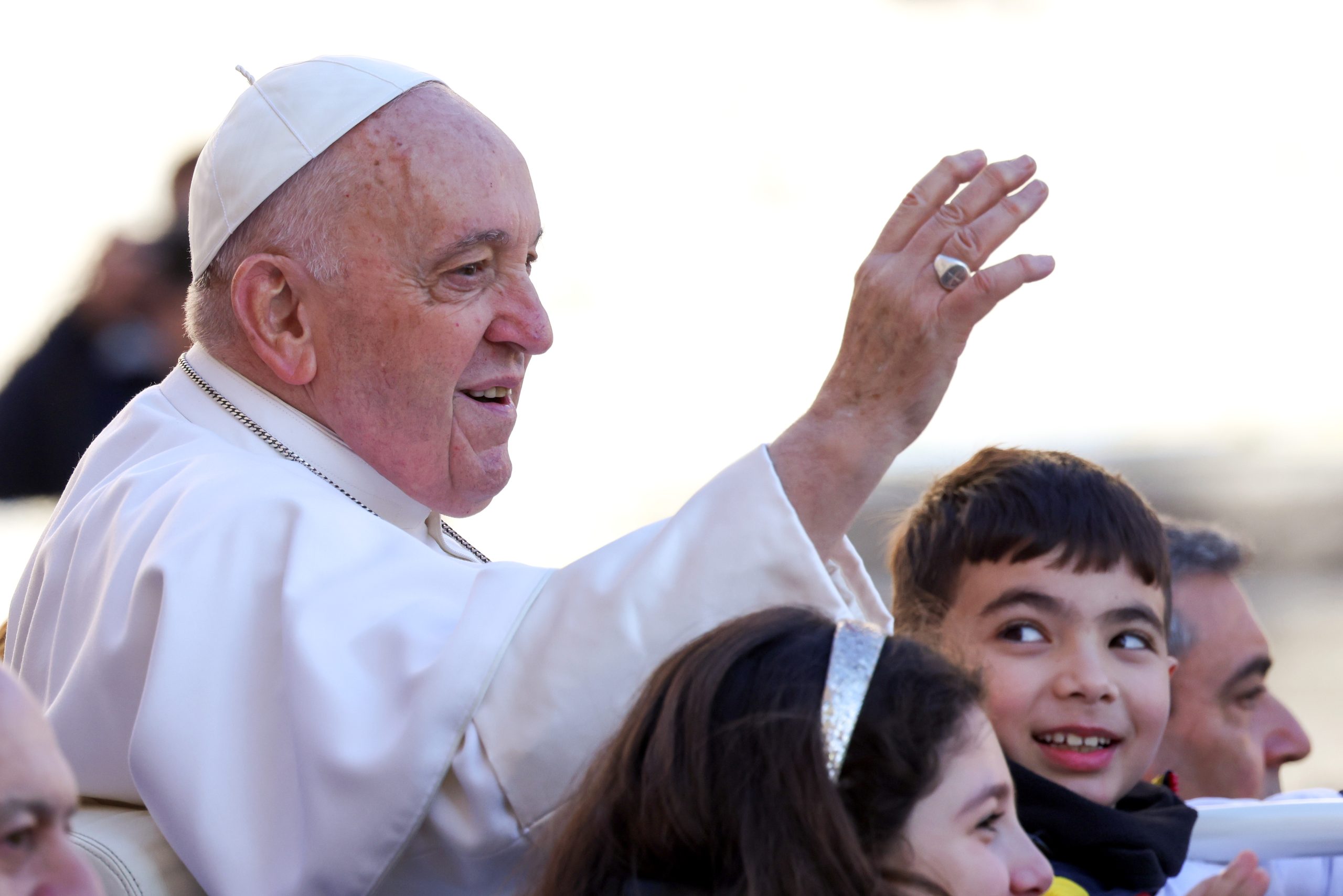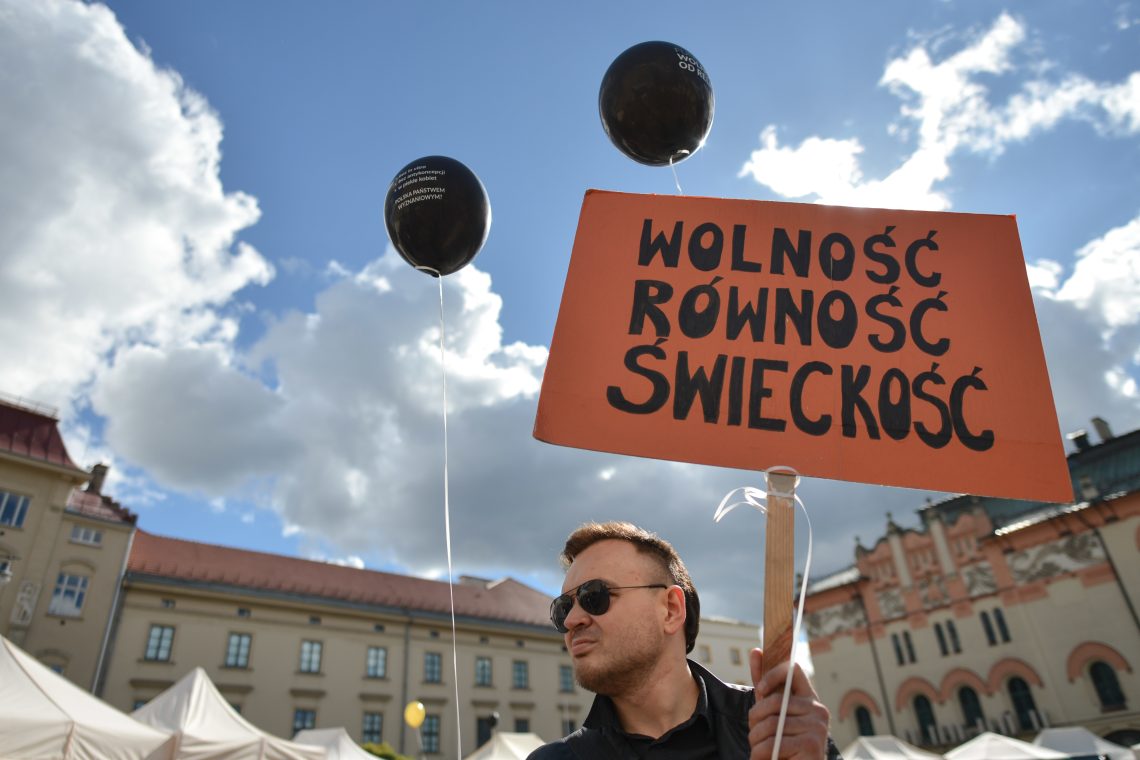Vatican geopolitics
The Church’s global influence will dwindle unless a new Catholic wave reverses current trends.

In a nutshell
- The Vatican’s stance on the war strains relations with Russia
- The Catholic Church faces increasing pressure from Beijing
- The EU is spearheading the secularization trend
The question of how the Vatican positions itself geopolitically has recently aroused renewed interest among the broader public. The end of the unipolar world order and the loss of Church influence in Europe and North America present the Vatican with tremendous challenges.
Pope Francis hits clearly different political notes than his predecessors John Paul II and Benedict XVI. Since the death of Benedict, who mediated for 10 years as “pope emeritus” between his successor and his critics, internal church conflicts have intensified. In Germany, the differences between progressives and conservatives have become so acute that a schism can no longer be ruled out. Naturally, interest today is primarily focused on the war in Ukraine. There has been no shortage of appeals for peace since the Russian invasion.
Pope Francis and the invasion of Ukraine
On February 24, 2022, Pope Francis called for the immediate cessation of hostilities. Since then, he has repeated this appeal dozens of times, expressing his sympathy for those suffering from the war. However, the Pope doubts whether it is right to deliver weapons to Ukraine and has stated that the United States and NATO are partly to blame for the conflict: “They are barking at the gates of Russia. They do not understand that the Russians are imperialists and will allow no foreign power to approach them,” he said a few months before the invasion.
The pontiff said that he is not on President Vladimir Putin’s side, but that he is “simply against reducing complexity to the distinction between good guys and bad guys without reasoning about roots and interests, which are very complex. In the end, it is about the interest in testing and selling weapons. It is very sad, but at the end of the day that is what is at stake.” This judgment clearly expresses the Latin American Pope’s fundamental distrust of the U.S.
Pope Francis has so far declined to visit Kyiv unless he can also travel to Moscow. President Putin has so far left this request unanswered. The war in Ukraine not only put a strain on diplomatic relations between the Vatican and the Russian Federation, it also ended the dialogue with the Moscow Patriarchate for the foreseeable future. Moscow, Russian Orthodox clerics argue, is the “Third Rome” with a divine duty to defend its empire against evil in the West. Even in the religious sphere, East-West relations are at their lowest point since the end of the Cold War.
The Catholic Church and authoritarian regimes
The second major challenge for the Vatican is China, where the Catholic Church has come under increasing pressure since Xi Jinping came to power. Pope Francis is trying to ease their situation by making concessions to the regime. In 2018, the Vatican signed an agreement with China that was renewed in 2022. It provides for the appointment of Catholic bishops by the communist government, which the Pope can only veto. One of the harshest critics of the agreement, which has not been made public, is the 91-year-old Hong Kong Cardinal Joseph Zen Ze-kiun.
The Vatican’s relations with Latin American revolutionaries are also controversial. In September 2015, Pope Francis visited Cuba, where he had a conversation with Fidel Castro that was described as “intimate.” The pope has expressed only muted criticism of authoritarian Nicaraguan President Daniel Ortega, who has shut down Catholic television and radio stations, expelled the papal nuncio, and arrested Catholic priests.
More by Karl-Peter Schwarz
Understanding Germany’s half-hearted support of Ukraine
Lionizing and sanctioning Russian artists
Many also criticized the Pope’s recent trip to Africa. When he visited the Democratic Republic of Congo and South Sudan in February 2023, he condemned “terrible forms of exploitation, unworthy of humanity” and called for “Hands off Africa! Stop choking Africa: it is not a mine to be stripped or a terrain to be plundered.” But he said nothing about the responsibility of the African elite for poverty and underdevelopment.
Popes and geopolitics
Protecting Christians in authoritarian regimes has been a problem for popes since the Russian Revolution and the Nazi seizure of power. When French Foreign Minister Pierre Laval asked Stalin in May 1935 to stop persecuting Catholics in order to appease the Pope, he is said to have replied: “The Pope? How many divisions does he command?”
In March 1937, Pius XI denounced red and brown totalitarianism in two consecutive encyclicals: “Mit brennender Sorge” against National Socialism, “Divini redemptoris” on Soviet communism. His successor Pius XII is often accused of not having publicly spoken out against the Holocaust. While no serious historian denies that he did everything in his power to protect Jews from being captured by Nazis, his “silence” is held against him.
Pius XII strictly rejected compromises with the communists. In 1949 he sanctioned membership in a communist party with excommunication. The course changed, however, under John XXIII (1958-1963), who had to seek arrangements to allow bishops behind the Iron Curtain to attend the Vatican II council.

With the election of Krakow Archbishop Karol Wojtyla as Pope John Paul II in 1978, a new era of the Vatican’s Eastern policy began. Wojtyla differed from his predecessors not only in his personal experience under the communist dictatorship and his knowledge of the methods of its struggle against the Church, but above all in his unshakable faith in the power of a religiously motivated nation. Under John Paul II, the communist regimes came up against the “divisions of the Pope,” especially in Poland, Lithuania and Slovakia. The democratic revolutions in Eastern Europe and the collapse of the Soviet Union marked the high point, but also the turning point, of the Catholic Church’s geopolitical influence in the 20th century.
John Paul II believed in a new evangelization of Europe. But this turned out to be just as unsuccessful as his hope that Western and Eastern Christianity would coexist harmoniously. While Wojtyla’s health deteriorated, signs of a deep crisis appeared in the Catholic Church. Probably no one was more aware of the extent of this crisis than Pope Benedict XVI, whom the conclave elected on April 19, 2005, as successor to John Paul II. As early as 1975, when he was still a professor in Regensburg, Ratzinger described “the incomparably new nature of the current situation, of a change in the world and in people that cannot be measured by the usual standards of historical change.”
Accelerating secularization
The first tendencies toward secularization became apparent in Western European societies soon after World War II. John XXIII’s aggiornamento (renewal) of the Second Vatican Council was meant to convey the Catholic message of faith in a contemporary manner. Instead, it flattened beliefs, encouraged the secularization of the Church and deepened the divide between modernists and traditionalists. While the Church was gaining influence in the communist East, it came under increasing pressure in the West, not least under the impact of the Marxist-oriented cultural revolution at universities and in the media.
Christian-democratic political parties reacted to this shift by throwing their Christian programs overboard. Scores of Christian Democrat politicians voted alongside Social Democrats and Liberals in favor of abortion rights and same-sex marriage. In the last years of John Paul II and especially during the pontificate of Benedict XVI, “creeping secularization” began to spread like wildfire. In traditionally Catholic countries like Ireland, Spain, Italy and eventually even Poland, young people are turning away from the Church. While 50.3 percent of Catholics still attended Sunday mass in Poland in 1990, in 2019 it was only 36.9 percent. In all of these countries, abandonment of the Church goes hand in hand with declining birth rates.
A 2018 Pew Research Center survey of 34 European countries found a decline in the proportion of Catholics in the population. Ronald Inglehart, the founder of the World Values Survey, came to a similar conclusion in an international comparison: “From 2007 to 2020, an overwhelming majority (43 out of 49) of these countries became less religious. This decline in belief is strongest in high-income countries but it is evident across most of the world.”
The European Union promotes the secularization of European societies. In 2004, the European Parliament rejected the Roman Catholic philosopher Rocco Buttiglione, who had been nominated as Commissioner for Justice, because he professed Catholic sexual morality. The inclusion of a reference to God in a European constitution was vetoed by France in 2003. The Lisbon Treaty (2007) mentions the “cultural, religious and humanistic heritage of Europe,” but not Christianity as a formative force in European history.
Globally, the focus of Catholicism is shifting to Africa, both in terms of the number of baptized and the proportion of practicing believers among them. But while the number of Catholics in southern Africa is increasing due to rapid population growth, it is lagging behind the growth of other Christian denominations
Scenarios
Continuing secularization
Secularization robs Christianity of its importance as a core element of identity and social cohesion, and as a barrier to the spread of Islam in immigration countries. Worn out by sterile infighting, the Catholic Church turns into a state-funded humanistic NGO.
Cardinal Gerhard Muller, the former prefect of the Congregation for the Doctrine of the Faith, says the Church’s attitude reminds him of the theologians who argued about the color of the Madonna’s eyes during the siege of Constantinople.
Religious backlash
In Europe and the U.S., the elite-driven cultural revolution encounters increasing resistance, boosting the standing of conservative parties. An anti-woke counterrevolution ensues, with the Catholic Church returning to the role it played under John Paul II during communism. A new wave of orthodoxy rolls back the influence of modernist theologians. The next conclave produces a conservative African pope who turns the tide.








